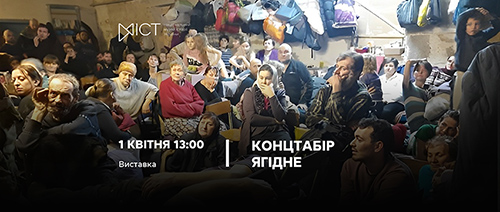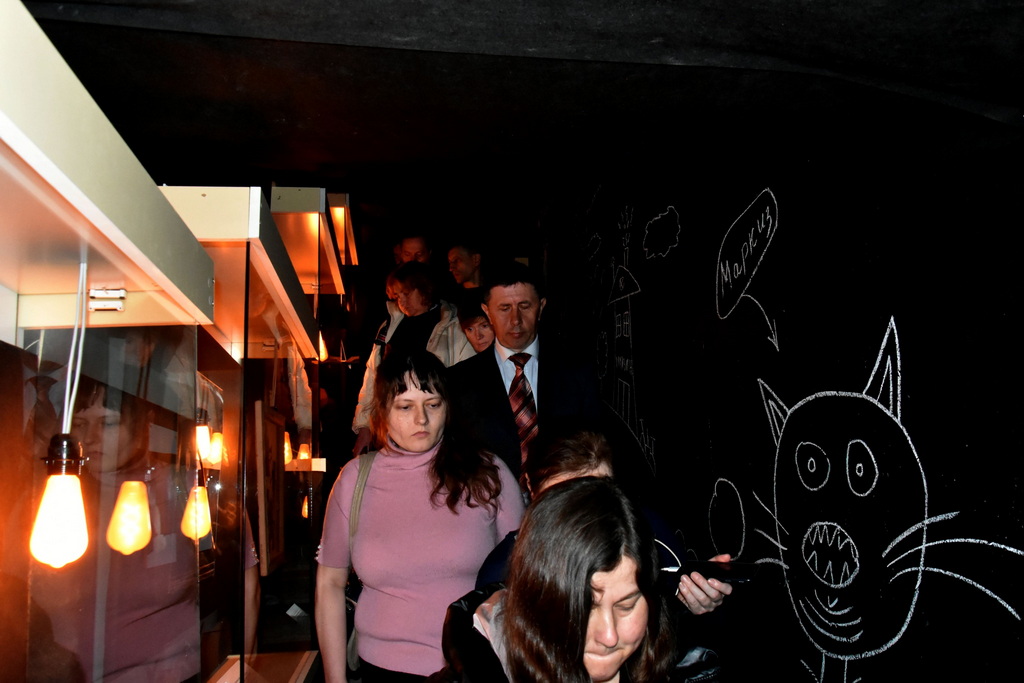
«Концтабір Ягідне»
Цим проектом музей розповідає про один зі страшних злочинів російських окупантів проти мирних мешканців України, про життя та смерть людей у жахливому підвалі смерті.
Ягідне – українське село неподалік від державного кордону України з Білоруссю, за 12 кілометрів на південь від Чернігова та 140 кілометрів на північ від Києва.
У перші дні повномасштабного російського вторгнення в Україну населений пункт захопили військові рф. Зайнявши село, окупанти примусово зігнали місцеве населення до підвалу школи, який перетворився у справжній концтабір. Протягом майже місяця тут утримували 368 осіб, серед яких було 69 дітей. Наймолодшій дитині, яка перебувала разом із іншими заручниками у приміщенні загальною площею 197 кв. м, було півтора місяця, найстаршій людині минуло 93 роки.
На верхніх поверхах сільської школи окупанти розмістили свій штаб. А загнаних до підвалу місцевих мешканців російські загарбники використовували як живий щит, прикриваючись ними від української артилерії.
Протягом майже місяця понад триста заручників перебували в нелюдських умовах. Простір підвалу не дозволяв людям навіть лягти для відпочинку, це можна було робити тільки по черзі. Катастрофічно не вистачало повітря, багато хто задихався, їжа та вода були у обмеженій кількості, деякі люди перебували у підвалі без теплих речей. У цих жахливих умовах люди почали помирати. Внутрішній бік вхідних дверей підвалу став своєрідним календарем, щодня ув’язнені дописували ще одну жахливу прожиту добу. Праворуч від виходу вели список загиблих, що на мить звільнення Ягідного складався з 10 людей. Ліворуч – список із семи прізвищ тих, кого розстріляли.
Виставка, побудована на сходах між четвертим і третім поверхами музею, нагадує спуск до підвалу. Ви побачите фото з мирного життя школи, малюнки, створені до та після окупації. Іграшки, які відволікали дітей від жахіть війни, та інші речі людей, якими вони користувалися у підвалі. Банки з їжею, що залишилися після російських окупантів, та речі з повністю згорілого будинку в Ягідному.
Виставковий проєкт створено у співпраці з волонтерською організацією «Добробат», яка допомагає постраждалим у відновленні житла на деокупованих територіях.
- Де відбувається: Національний музей історії України (Володимирська, 2)
- Тривалість: до кінця року
The exhibition Yahidne Concentration Camp
With this project, the museum tells about one of the terrible crimes of the russian occupiers against the peaceful people of Ukraine, about the life and death of people in the horrifying basement of death.
Yagidne is a Ukrainian village near the Belarusian-Ukrainian border, 12 kilometers south of Chernihiv and 140 kilometers north of Kyiv.
In the first days of the full-scale russian invasion of Ukraine, the russian military captured the settlement. After occupying the village, they forcibly drove the local population to the school's basement, which became a real concentration camp. For almost a month, 368 people, including 69 children, were held there. The youngest child, who was together with other hostages in a room with a total area of 197 square meters, was a month and a half, and the oldest person was 93 years old.
On the upper floors of the village school, the occupiers placed their headquarters. The russian invaders used the residents driven to the basement as human shields, covering themselves with hostages from the Ukrainian artillery.
For almost a month, more than three hundred hostages were held in inhumane conditions. Because of the limited basement space, people couldn’t even lie down to rest, which could only be done in turn. There was a catastrophic lack of air. Many were suffocating, food and water were limited, and some people in the basement had no warm clothes. In these terrible conditions, people began to die. The inner side of the entrance door to the basement became a kind of calendar. Every day the prisoners marked another terrible day they had lived. To the right of the exit was a list of the dead, which at the time of Yahidne's release, consisted of 10 people. On the left was a list of seven names of those who were shot.
The exhibition, built on the stairs between the fourth and third floors of the museum, resembles a descent to the basement. You can see photos from the peaceful life of the school and drawings created before and after the occupation. Toys that distracted children from the horrors of war and other things people used in the basement. Cans of food left by the russian occupiers and items from a completely burnt house in Yahidne.
The exhibition project was created in cooperation with the Dobrobat volunteer construction battalion, which helps the victims restore housing in the de-occupied territories.
























